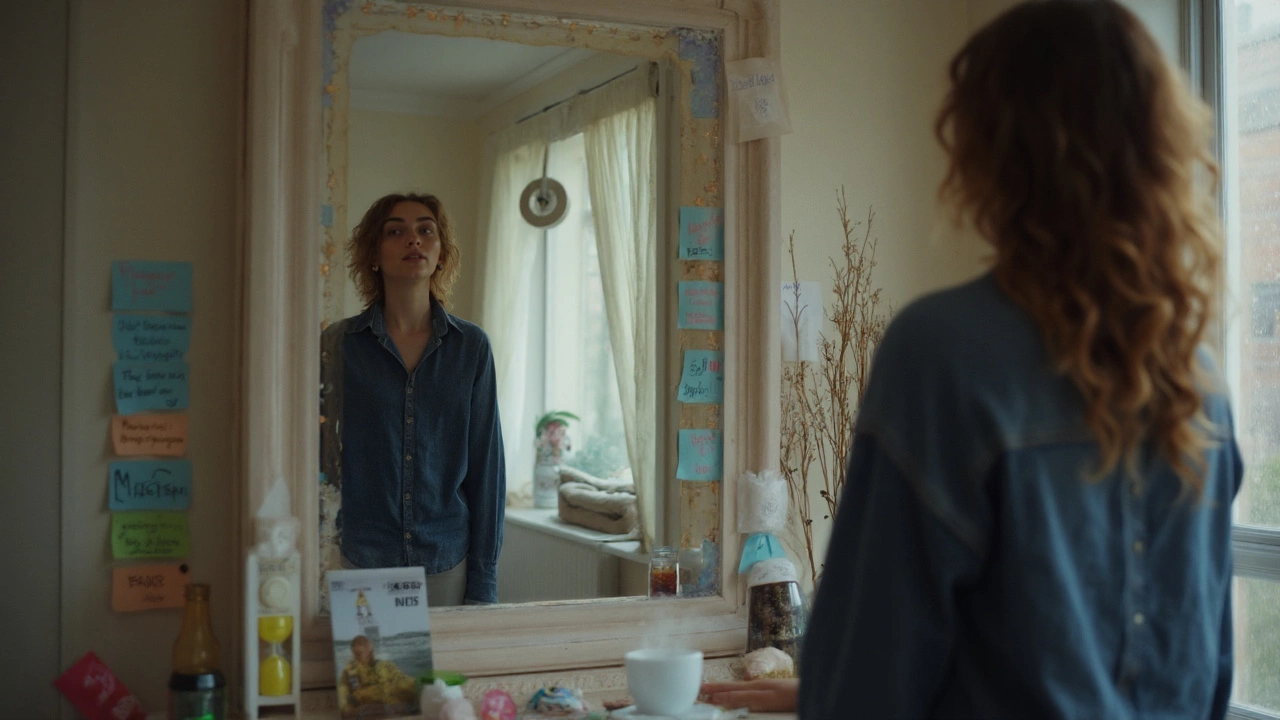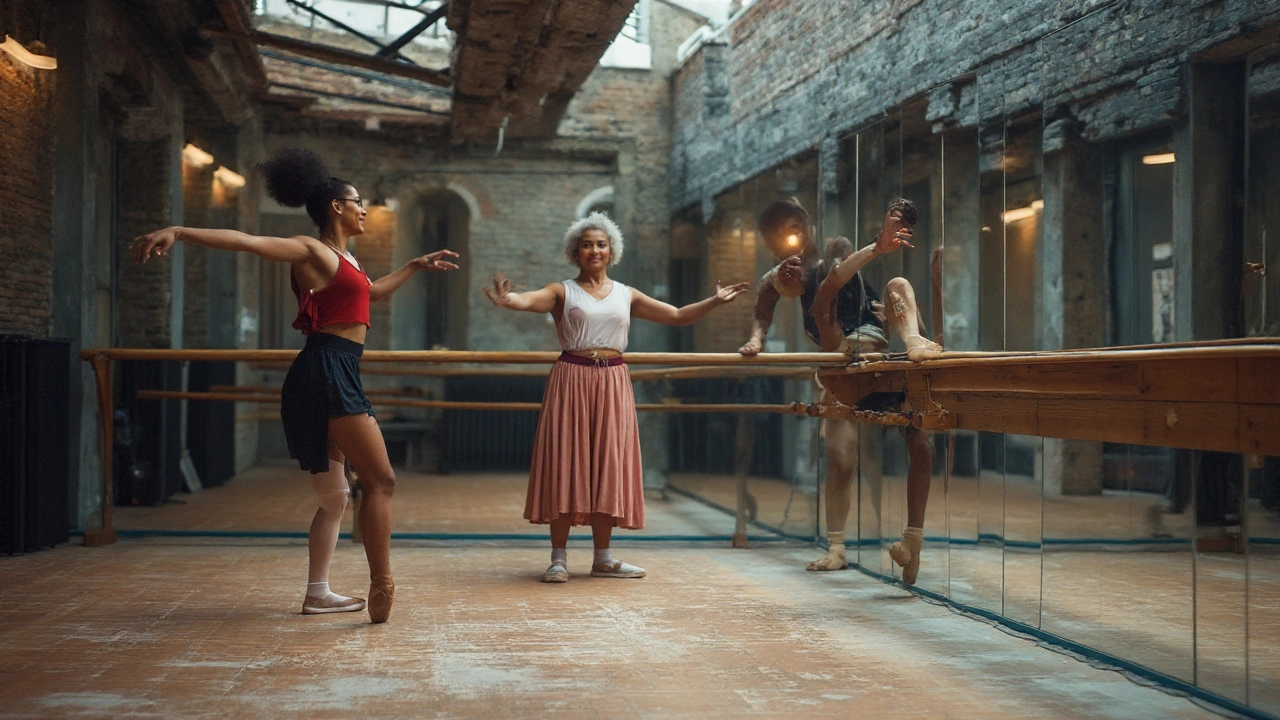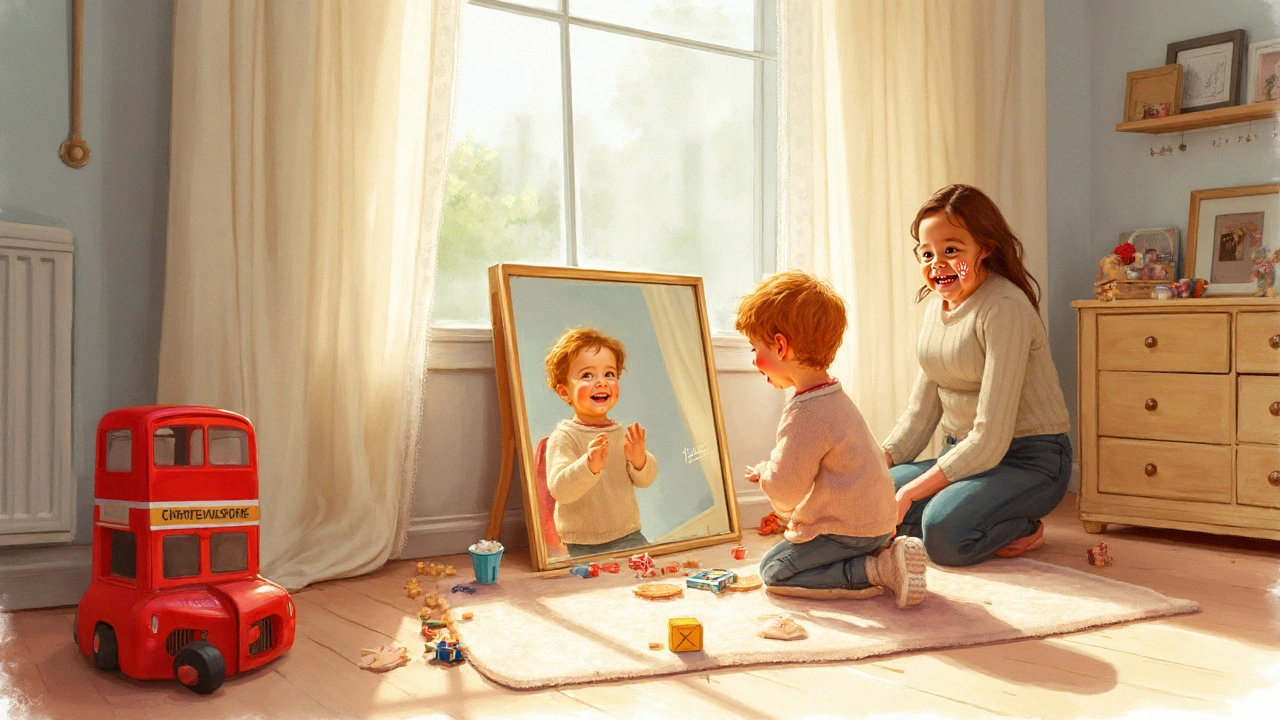Who Is Obsessed With Mirrors? Psychology, Culture, And When To Worry

TL;DR
- Mirror fixation shows up in normal life (toddlers, teens, dancers, designers), in culture (selfies, fashion), and in clinical patterns (BDD, OCD, eating disorders).
- Healthy use: brief, purposeful, and flexible. Harmful use: frequent, distressing, hard to stop, and life-disrupting.
- Red flags: scrutinizing a specific feature, checking or avoiding mirrors for long periods, rituals that relieve anxiety only short-term.
- Quick fixes: time-box checks, remove magnifying mirrors, change lighting, and shift to function-based checks. For severe distress, CBT/ERP and SSRIs have good evidence.
- Parents: mirror play is fine; praise what bodies do, not just how they look. Teens on social media need boundaries and perspective.
A mirror can be a tool, a trap, or a stage. If you’ve ever caught yourself zooming in on your pores under brutal bathroom lighting, you know how fast a quick check turns into a spiral. Living in windy Wellington, I see it daily-shop windows become truth-tellers, hair goes rogue, and I catch my son Ira adjusting his fringe like a pro while my daughter Sylvie face-paints with the seriousness of a surgeon. So who’s actually obsessed with mirrors-and when does it stop being normal curiosity and start being a problem?
This guide sorts the healthy from the harmful, busts a few myths (no, mirror love doesn’t always mean narcissism), and offers simple steps to reset your relationship with your reflection.
Who actually gets obsessed with mirrors (and why)
“Obsessed” is a big word. Most people who spend time with mirrors aren’t unwell; they’re doing a job, building a skill, or exploring identity. Others use mirrors to soothe anxiety, which can harden into habit. A smaller group is dealing with disorders where mirrors become a battleground. Here’s how to tell which is which.
Normal and common:
- Babies and toddlers: From about 6-18 months, kids hit the “mirror stage” and begin to recognize themselves. It’s healthy, adorable, and messy (lipstick art on glass is a rite of passage). Psychoanalytic theory dubbed this the “mirror stage” decades ago; modern developmental research backs the timing.
- Teens: Adolescence ramps up self-awareness and social comparison. Mirrors become a lab for identity-fashion, makeup, shaving, the first serious hairstyle. Brief spikes in appearance checking are baked into development.
- Performers and athletes: Dancers, weightlifters, gymnasts, barbers, makeup artists, photographers-mirrors are feedback devices. Technique improves through immediate visual cues. In studios, mirrors help alignment and injury prevention.
- Designers and decorators: Mirrors shape light, depth, and mood. Interior folks use them to make tight rooms feel bigger, bounce daylight, or frame focal points.
Culture and tech:
- Selfie era: Front-facing cameras created portable mirrors. Research out of UNSW and the University of Melbourne (2016-2019) found more selfie editing correlates with body dissatisfaction, especially under heavy social comparison.
- Fashion/beauty work: Industry pros spend hours with reflective surfaces-it’s not pathology; it’s workflow.
Clinical patterns (worth attention):
- Body Dysmorphic Disorder (BDD): Intense preoccupation with perceived flaws others don’t see (or see as minor). Mirror checking or complete mirror avoidance are common. DSM-5-TR (American Psychiatric Association, 2022) places BDD under obsessive-compulsive and related disorders; typical onset is adolescence. Community prevalence sits around 1.7-2.4% of adults.
- OCD with mirror checking: Compulsions like checking symmetry, skin, or hairline “until it feels right.” The relief is brief; the urge returns. NIMH materials describe time-consuming rituals that impair life.
- Eating disorders and muscle dysmorphia: Mirror use centers on weight, tone, or shape. People can swing between checking (pinching, measuring in the mirror) and avoidance. Muscle dysmorphia, often in men, fixates on being “too small” despite being muscular (Phillips et al.).
- Narcissistic traits: Not everyone who loves mirrors has narcissism. True narcissistic personality disorder involves grandiosity, low empathy, and a need for admiration across contexts-mirrors might be props, but they aren’t the whole story.
Classic research by Veale and Riley (2001) split mirror behavior into two types: brief, goal-focused checks (useful) and prolonged, detail-scrutinizing sessions (risky). More recent work links intensive zooming, harsh lighting, and magnifying mirrors with higher dissatisfaction and anxiety.
| Group | Typical Mirror Behavior | Why It Happens | When It’s Fine | Red Flags |
|---|---|---|---|---|
| Babies/Toddlers | Touching, smiling, making faces | Self-recognition, play | Curious, brief, joyful | None (unless developmental concerns elsewhere) |
| Teens | Outfit checks, selfies, skin inspection | Identity, peer comparison | Fits routines, not distressing | Hours spent, school avoidance, severe distress |
| Dancers/Athletes | Form checks, alignment | Skill feedback | Time-boxed to training | Fixating on “flaws,” training derailed by checking |
| Designers/Artists | Placement tests, light/angle play | Function and aesthetics | Project-driven | Personal distress about appearance tied to work mirrors |
| BDD/OCD | Scrutinizing, rituals, or avoidance | Anxiety and compulsions | - | Distress, impairment, impossible to resist |
| Eating/Muscle Dysmorphia | Shape checks, pinching, flexing | Distorted self-image | - | Compulsive checks, diet/training ruled by image |
Here’s the key: healthy mirror use is usually brief and purposeful; harmful use feels urgent, rigid, and expands to fill as much time as you’ll give it. If you feel panicky away from mirrors, that’s data. If a mirror makes you late, that’s data too.
I’ve had days in Wellington where the wind makes mockery of any hairstyle, and my first instinct is to find the next reflective window. That nudge is normal. Spending 40 minutes dissecting a hairline under fluorescent light? That’s a different beast.

Healthy vs harmful: a simple field guide
Think in four tests-Time, Distress, Control, and Cost. They’ll steer you better than guesswork.
- Time: Does mirror use stay under 5-10 minutes per session? Or does a “quick check” become 30 minutes?
- Distress: Do you feel mostly neutral-to-okay? Or anxious, angry, ashamed?
- Control: Can you stop when you said you would? Or do you restart “just one more time”?
- Cost: Are you late, avoiding events, or skipping work/school? Or is life running fine?
Healthy patterns look like: “Check spin class form for two minutes, fix posture, move on.” Harmful patterns look like: “Stare at pores, switch lighting, try different mirrors, photograph, zoom, repeat.”
Quick heuristics you can use today:
- Purpose-first check: Say the purpose out loud before you look: “Check if shaving cream is off.” If another task tries to hijack you (“Is my nose crooked?”), step away.
- The 10-3-1 rule: 10 minutes max per grooming block, 3 lighting setups per day (natural, bathroom, gym), 1 magnification-ideally none.
- Function beats appearance: Go in asking, “Can I see clearly?” not “Do I look perfect?”
- Lighting reality check: Harsh downlighting exaggerates texture. If your only mirror is punishing, it will punish you. Change the light, change the story.
Common red flags by theme:
- Scrutinizing one feature (skin, hairline, nose, symmetry) from inches away
- Rituals: specific angles, number of checks, repeating until it “feels right”
- Mirror avoidance: covering mirrors or refusing photos because seeing yourself is unbearable
- Impairment: late to work, skipping social plans, not leaving the house until the ritual is done
What the evidence says:
- BDD: DSM-5-TR describes repetitive behaviors (mirror checking, skin picking, reassurance seeking) driven by perceived defects. Cognitive-behavioral therapy tailored to BDD and SSRIs show solid efficacy (Phillips, 2005; NICE guidance).
- OCD: Exposure and Response Prevention (ERP) reduces compulsions, including mirror checking, by preventing the ritual after a trigger and allowing anxiety to fall naturally.
- Social media link: Studies by Fardouly (2015) and Holland & Tiggemann (2016) found appearance-focused social media use correlates with body dissatisfaction and self-objectification, especially with frequent selfie editing.
Parents’ quick guide:
- Toddlers: Mirror play builds self-awareness. Keep it playful. Paint a moustache, pull faces, move on.
- Tweens/teens: Set phone-free bathroom time. Remind them filtered photos aren’t real life. Praise effort, humor, kindness, and strength-not just looks.
- Signals to watch: Long bathroom time plus distress, refusal to be photographed, obsessive talk about “fixing” a specific flaw.
A note on narcissism: Enjoying mirrors is not proof of narcissism. Narcissistic personality disorder needs a pattern of grandiosity and low empathy across life domains. If that’s not there, you’re probably just human in front of glass.
And yes, I’ve caught myself doing the beard-line micro-adjustment before a school pickup. Ira thinks it’s funny; Sylvie grades the fade with terrifying honesty. Checks keep you present. Obsessing pulls you under.

What to do: reset your mirror habits (and help someone else)
Start simple. Most mirror spirals are powered by frictionless access and harsh conditions: too many mirrors, bad lighting, and a phone that behaves like a pocket mirror. Tweak those, then layer in behavior tools.
Step-by-step resets:
- Audit your mirrors and triggers: Count your mirrors (including front-facing cameras). Note when you check most-mornings, pre-meetings, after social media. Write it down for three days.
- Fix the environment: Soften lighting (diffuse, indirect), remove or stash magnifying mirrors, set a clear mirror height so you see your whole face, not just a pore crop.
- Time-box checks: Set a 5-minute timer. Say the purpose aloud. When the alarm goes, step away. If you want another look, schedule it later, not immediately.
- Shrink frequency: Tie checks to existing routines (after shower, before leaving). No pop-ins between. Watch how urges fall when you don’t feed them.
- Change the angle: Stand an extra step back. No face zoom-ins. Distance interrupts the micro-scrutiny spiral.
- Rewrite the self-talk: Swap “I need to fix my skin” for “My skin is a living organ doing its job.” Body neutrality beats forced positivity when you’re triggered.
- ERP lite (for checking urges): Notice the urge. Decide to wait 10 minutes. Ride the discomfort without checking. Track the drop; it usually falls like a wave.
- Phone rules: Disable camera preview on the lock screen. Move the camera app off your home row. Cover your selfie lens with a tiny sticker for a week if you need a cold-turkey reset.
For dancers, lifters, and performers:
- Mirror periodization: Use mirrors during technique blocks; tape over them during performance runs to build proprioception.
- Video > mirror for form: Short, objective clips beat live micro-scrutiny. Review once, make one correction, re-run.
- Coach cueing: Ask for one cue per rep or pass. “Neutral spine” is actionable; “Look leaner” isn’t.
For parents and carers:
- Mirror play is good: Make faces, play dress-up, try temporary tattoos. Then do something active-scooters on the path, backyard cricket-to anchor identity in action.
- Language shift: Praise function (“Strong legs for the hill”) and process (“You stuck with the tricky braid”) more than looks.
- No magnifying mirrors in shared spaces: They’re anxiety accelerants. Keep lighting warm and even.
- When you worry: If your teen is stuck in cycles of checking/avoidance and distress, talk to your GP. In Aotearoa, your GP can refer to public mental health services (Te Whatu Ora) or suggest private CBT.
Signs it’s time for professional help:
- Daily life suffers: late to school/work, avoiding friends, skipping activities
- Severe distress tied to a specific feature; checking or avoiding for hours
- Skin damage from picking or DIY “fixes”
- Depressive symptoms or thoughts of self-harm
What works in therapy and medicine (evidence-led):
- CBT for BDD: Targets distorted beliefs, reduces checking/avoidance, builds tolerance for normal appearance variation. Randomized trials show meaningful improvement (Phillips, 2005; NICE).
- ERP for OCD: Expose to the trigger (seeing your face) and block the ritual (no checking/reassurance). Anxiety drops on its own, teaching your brain you don’t need the ritual.
- SSRIs: In moderate-to-severe BDD/OCD, SSRIs can reduce the intensity of obsessions and compulsions. Prescribing and monitoring go through a clinician.
Design tips for mirror-heavy homes:
- Right mirror, right room: Big mirrors in living rooms or hallways can brighten and open space without inviting close facial scrutiny.
- Distance by design: Place bathroom mirrors so you naturally stand a little back. Use 3000-4000K lighting for kinder skin tone.
- Limit magnification: Keep a small travel magnifier for essentials (contact lenses), not daily grooming.
Personal note from a windy city: I’ve learned to keep one decent bathroom mirror with gentle light and stop there. When the northerly shreds my hair on Cuba Street, I let it. My kids don’t remember if my fade was crisp; they remember if I showed up to the school play on time.
Mini-FAQ
- Is loving mirrors the same as narcissism? No. Enjoying your reflection or caring about style is not narcissistic personality disorder. NPD is a broader pattern (grandiosity, low empathy) across life.
- How many checks are “too many”? There’s no magic number, but needing to check repeatedly until it “feels right” and being late often are big warning signs.
- My teen avoids mirrors-should I worry? Avoidance can be as telling as checking, especially if tied to distress about a “flaw.” Gently explore, reduce pressure, and consider a GP chat.
- Do magnifying mirrors make anxiety worse? Often yes. They exaggerate texture and invite picking. Store them away unless essential.
- Can I fix this alone? Many people improve with environment tweaks, time-boxing, and ERP-lite. If distress is high or life is impaired, get professional support.
Quick checklists
- Healthy mirror habits checklist: purpose-first, timer on, soft light, distance view, one pass per grooming task
- Red flag checklist: long sessions, rituals, panic without mirrors, life delays, skin picking, feature fixation
- Parent checklist: mirror play framed as fun, praise function, limit bathroom phone time, model neutral self-talk
Next steps and troubleshooting
- If you suspect BDD/OCD: Track a week of mirror time and distress (0-10 scale). Take it to your GP. Ask about CBT/ERP. Consider an SSRI discussion for moderate-to-severe symptoms.
- If you’re a dancer/athlete: Schedule mirror and mirror-free blocks. Swap to video review. Ask your coach for one technical cue per set.
- If you’re a partner/friend: Don’t reassure the “flaw.” Validate feelings, then pivot to values (“I hear you’re anxious; shall we go for that walk we planned?”).
- If you relapse: Treat it like a training wobble, not failure. Reset the timer, remove the magnifier, and try an ERP-lite delay.
One last thing: language matters. If the phrase mirror obsession feels heavy, reframe it as “mirror habits.” Habits can be reshaped. Start small. Pick your light. Keep your promises to yourself. And when the glass starts hogging your attention, remember there’s more to see outside it.